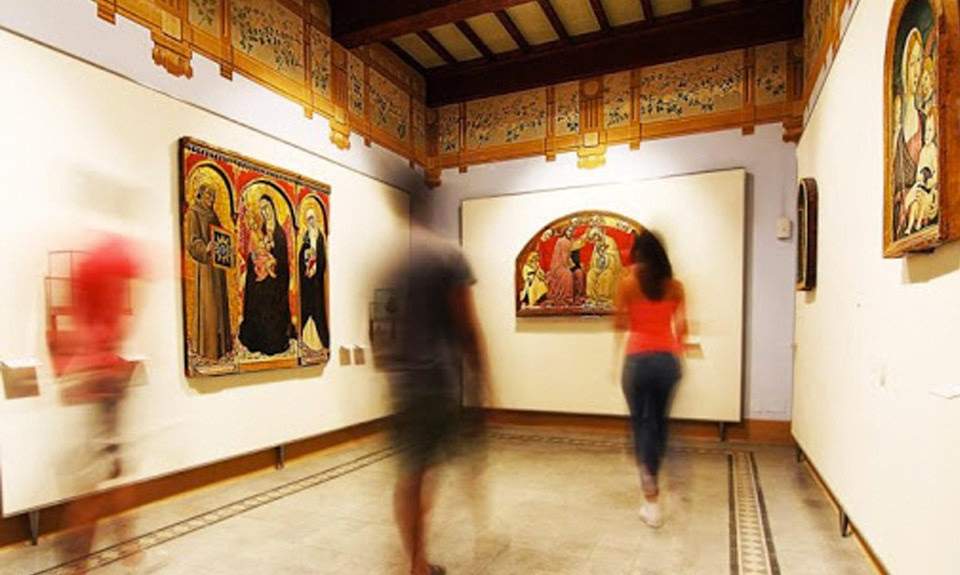Tuscan museums are launching an appeal to the Minister of Cultural Heritage Dario Franceschini to exit the emergency and enter phase 2: in fact, the reopening has been scheduled for May 18, but small museums are in danger of being forgotten, and will instead have to be the starting point for the relaunch of the entire museum system.
Alessandro Ricceri, president of the Fondazione Musei Senesi, and Irene Lauretti, president of the Sistema Musei di Maremma, spokespersons for the petition shared by fifteen Tuscan museums and museum systems (the Archaeological Museums Association of Tuscany, the Ecomuseum Association of the Pistoia Mountains, ò’Associazione Nazionale Case della Memoria, the Fondazione Musei Senesi, the Fondazione Paolo Cresci per la storia dell’emigrazione italiana and Sistema Museale della provincia di Lucca, the Fondazione Parsec Museo di Scienze Planetarie e Parco del Centro di Scienze Naturali di Prato and Rete Musei di Prato, the MAEC - Museo dell’Accademia Etrusca e della Città of Cortona, the Museums of Maremma, the Florentine Museum and Institute of Prehistory of Florence, the Museum of Natural History of the Mediterranean - Museums and Parks System of the Province of Livorno, the Integrated Museum System Mugello Montagna Fiorentina, the Museum System of the Malaspina Lands and Stele Statues, the Museum System of Montelupo Fiorentino, the Museum System of Chianti and Florentine Valdarno, the Museum System of Montespertoli, the Museum System of Volterra, the Museum System of Upper Valdarno).
“Local museums,” the appeal’s drafters write, “ are often and wrongly labeled as ’minor,’ as is evident in the collective imagination of Italians, who are inclined to identify in ”supermuseums“ alone the concept of national cultural heritage. A heritage that certainly finds excellences in State Museums, but which, in our virtuous country and even more so in Tuscany, manifests itself as a ’diffuse museum’, as an extraordinary fabric that is interwoven with the landscape and communities - that ’cultural landscape’ of which, as reiterated by the Faro Convention, the museum becomes the custodian and interpreter precisely in the specificities of the territories. ISTAT 2018 data show that, of the 553 Tuscan museums, as many as 497 are non-state-owned: a value confirmed by the national average of 90.6 percent.”
“Thanks to the efforts of local authorities and regional contributions,” the appeal continues, “these realities have been able to maintain an active role in the presidium and dissemination of culture, focusing on the relationship with the public rather than on the number of tickets sold, working alongside archives and libraries in an interdisciplinary logic, pursuing research paths with universities and superintendencies. This network of local museums, all the more so in the Tuscan case, is and will be an economic lever also for that slow tourism that can, albeit to a reduced extent, reactivate itself at least on a national basis in the coming months. Moreover, ISTAT data again offer significant estimates in this regard: in Tuscany there are more than 16 million visitors to non-state museums compared to 7.5 million for state museums; and still at the employment level, the same local museums employ 5,300 people compared to 1,794 for state museums.”
Tuscan museums are therefore asking the minister to be involved in state measures to support culturea local government, already burdened by major losses, to be duly valued and promoted as the heritage of Italians, on a par with state museums, and to be put in a position to guarantee operational and contractual continuity for their staff, safeguarding the experience and professionalism gained over the years, while maintaining employment levels.
Pictured: the Museum of Sacred Art of the Val d’Arbia (Buonconvento, Siena)
 |
| Tuscan museums' appeal to Franceschini: land museums are crucial, don't forget us |
Warning: the translation into English of the original Italian article was created using automatic tools. We undertake to review all articles, but we do not guarantee the total absence of inaccuracies in the translation due to the program. You can find the original by clicking on the ITA button. If you find any mistake,please contact us.